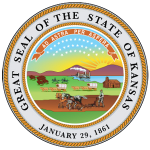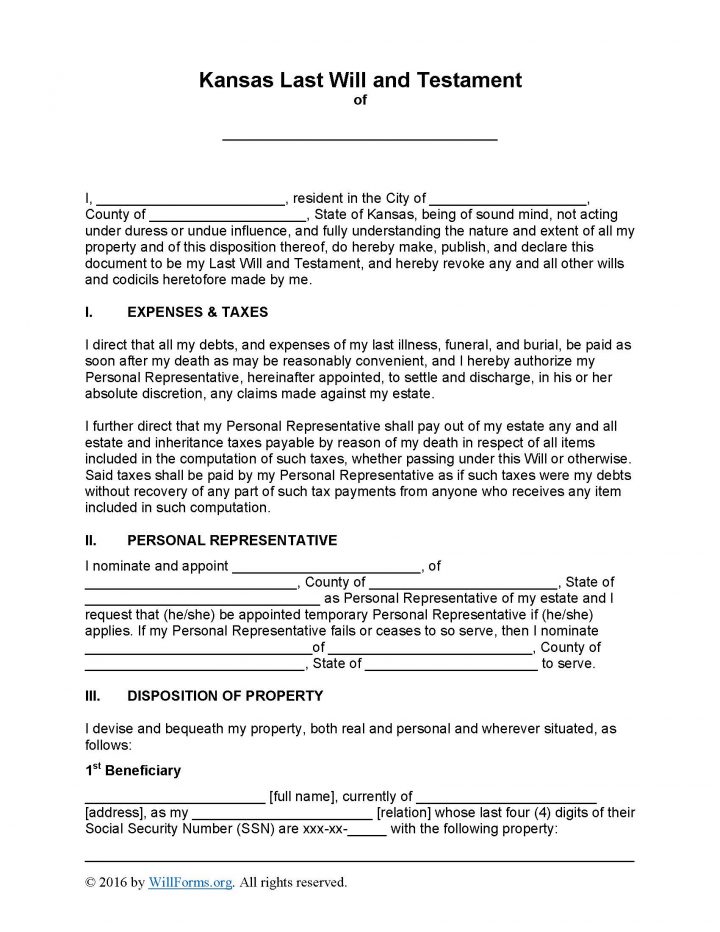
|
Kansas Last Will and Testament Form |
The Kansas last will and testament is a legal document that is designed to allow an individual (Testator) to set fourth a record in writing that will specify how the Testator would like to distribute to their beneficiaries their financial accounts, personal and/or real property. The document will also allow the individual to elect someone they trust as their executor. This executor will ensure that the estate is distributed according to the Testator’s wishes and as stated in the document. This document will require witness signatures.
Laws – Kansas Statutes Chapter 59: Probate Code, Article 6: Wills
How to Write
Step 1 – The Testator must first download the document. Establish the Testator by submitting their full name in the first line on the page. The Testator would then provide:
- The Testaror’s name
- City
- County
- Review titled section “Expenses and Taxes”
Step 2 – To establish the Executor – The Testator may delegate an executor by providing the following:
- Name of the initial executor
- Address
- County of residence
- State of residence
If the first delegated executor becomes unable or unwilling to serve for any reason at all, an alternate may be appointed in advance:
- Name the aleternate executor
- Address
- County
- State
Step 3 – Disposition of Property –Submit all beneficiary information in the lines provided. If there are more than three beneficiaries, add a sheet, continuing with all of the same information, attach it to this document:
- Enter the name of each beneficiary
- Current address
- Relationship to Testator
- Enter the last 4 digits of the beneficiary’s Social Security Number (SSN)
- The Testator must review the next paragraphs
- If additional instructions are necessary, the Principal may add them on a separate sheet and attach them to the form
Step 4 – Titled Sections – The Testator must review:
- Omissions
- Bond
- Discretionary Powers of Personal Representative (subsections A – K)
- Contesting Beneficiary
- Guardian Ad Litem Not Required
- Gender
- Assignment
- Governing Law
Step 5 – Binding Agreement – The Principal must read and agree to the first paragraph. Then enter the following:
- Testator’s name
- Enter the date of document exectution in dd/m/yy format
- Testator’s name
- Testator’s printed name
- Enter the date of signature (dd/m/yy)
- Testator’s name
Step 6 – Witness Signatures and Notary Public – All signatories will have to be present so that the notary public may witness all signatures
Witnesses –
- Witnesses signatures
- Current addresses
Testamentary Affidavit –
- The notary shall acknowledge this document after it’s been completed by the Testator
- The notary will submit the names of all parties
- Testator shall enter their signature
- Witnesses shall enter their respective signatures before the notary

